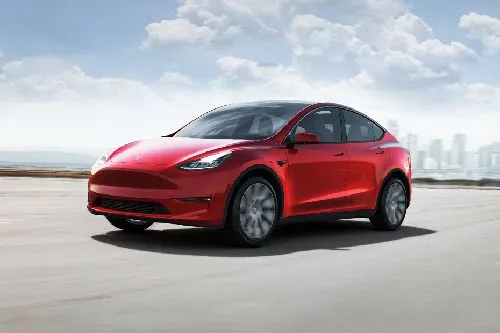
The rapid evolution of electric vehicles (EVs) has brought about significant changes in the transportation industry. With growing concerns about environmental sustainability and the depletion of fossil fuels, electric vehicles have become the leading alternative to traditional gas-powered cars. However, one of the biggest hurdles for the mass adoption of EVs has always been charging infrastructure. While charging stations have proliferated, they are often seen as cumbersome and inconvenient. This is where Wireless EV charging comes into play.
Wireless charging for electric vehicles promises to revolutionize the way we think about powering our cars. This cutting-edge technology offers a seamless, efficient, and user-friendly solution that could become the norm in the near future. This article will explore how Wireless EV charging works and why it is poised to become the future of EV infrastructure.
The Evolution of Electric Vehicle Charging
Before diving into the specifics of Wireless EV charging, it’s essential to understand how charging has evolved over the years. When EVs first entered the market, their limited range and the scarcity of charging stations were significant obstacles. Early adopters were forced to plan trips meticulously, ensuring they had access to a plug-in station along their route. Fast forward to today, and while charging networks have expanded, they are still limited, especially in rural and underdeveloped areas.
Traditional EV charging relies on physical cables to transfer electricity from a charging station to the vehicle. There are several levels of charging: Level 1, which uses standard household outlets; Level 2, which provides faster charging and requires a dedicated charging station; and DC fast charging, which is the fastest method available but often more expensive to install and use.
While these methods have worked thus far, they present limitations such as the inconvenience of handling cables, wear and tear of physical components, and the aesthetic issues of having numerous charging stations clutter public spaces. This is where Wireless EV charging offers a cleaner, more efficient alternative.
How Wireless EV Charging Works
Wireless EV charging, also known as inductive charging, operates on the principle of electromagnetic induction. This concept has been used in other applications, such as wireless phone chargers, but adapting it to vehicles requires more advanced technology.
Here’s a breakdown of how it works:
- Base Pad Installation: A base pad, often embedded in parking spots or garages, contains the primary coil. This base pad is connected to a power source, such as the electrical grid.
- Vehicle Receiver: The EV is equipped with a secondary coil or receiver. When the car is parked over the base pad, the coils are aligned.
- Electromagnetic Induction: When activated, the base pad generates an electromagnetic field, which induces a current in the receiver coil, thereby charging the vehicle’s battery. This transfer occurs without any physical connection between the charger and the car.
- Efficiency and Alignment: While wireless charging may sound simple, the alignment of the vehicle and the base pad is crucial. Modern systems often include smart features that assist with alignment, ensuring the vehicle is positioned correctly for maximum efficiency.
Benefits of Wireless EV Charging
The convenience of Wireless EV charging cannot be overstated. Imagine simply parking your car and having it charge automatically, with no need to plug in cables or find a specific station. The user-friendly nature of wireless systems could encourage more people to switch to electric vehicles. However, convenience is just one aspect of why Wireless EV charging is a game-changer.
- Reduced Wear and Tear: Traditional charging requires physical connectors that are subject to wear and tear. Over time, these components can degrade, leading to maintenance costs and the potential for failure. Wireless systems eliminate this problem by doing away with connectors entirely.
- Aesthetic Improvements: As cities move towards creating more sustainable and green environments, reducing the visual clutter caused by traditional charging stations becomes crucial. Wireless EV charging pads can be seamlessly integrated into parking spaces, reducing the need for unsightly charging posts.
- Increased Safety: With wireless systems, there is no risk of electrical shock or exposure to live wires, making the process inherently safer for users and bystanders. This could be especially important in environments like public parking lots or residential areas.
- Scalability and Integration with Autonomous Vehicles: As autonomous vehicles (AVs) become more prevalent, Wireless EV charging offers an ideal solution for keeping these vehicles powered without human intervention. AVs could automatically park over charging pads and replenish their batteries, ensuring seamless operation.
- Enhanced Durability in Extreme Weather: Traditional charging stations are exposed to the elements, leading to potential damage in harsh weather conditions. In contrast, wireless systems, especially those embedded in the ground, are less vulnerable to weather-related wear and tear.
Challenges and Current Limitations
Despite its numerous advantages, Wireless EV charging is not without its challenges. For one, the technology is still relatively new, meaning it comes with a higher price tag compared to traditional charging infrastructure. This cost barrier may slow its adoption, particularly in areas where governments or businesses are already heavily invested in existing charging networks.
Another potential limitation is the efficiency of wireless systems. While manufacturers are working to improve the efficiency of inductive charging, it is generally lower than that of plug-in systems. Energy loss during the transfer process can lead to longer charging times, which could be a concern for users who need quick turnarounds.
Lastly, widespread adoption will require the standardization of technology across different car manufacturers. Currently, different automakers may use different types of receivers or charging protocols, meaning that a universal system is not yet in place.
The Future of Wireless EV Charging
Despite these challenges, the future of Wireless EV charging looks promising. Several companies are investing heavily in the technology, and early adopters are already benefiting from its convenience. Moreover, as the technology becomes more widespread, the cost is likely to decrease, making it a more viable option for both individual consumers and businesses.
Governments around the world are also recognizing the potential of Wireless EV charging. In cities like Oslo, Norway, pilot projects have already been launched to embed wireless charging systems in public roads. These systems could allow cars to charge while driving, significantly extending their range without the need for frequent stops. While this concept may still be years away from mainstream adoption, it demonstrates the potential of Wireless EV charging to reshape the way we think about transportation infrastructure.
The growth of Wireless EV charging is also closely tied to the rise of smart cities. As urban areas become more interconnected through the Internet of Things (IoT), the ability to manage energy consumption and distribution efficiently will become critical. Wireless charging systems, integrated with smart grids, could play a key role in this transformation by allowing for more dynamic energy management.
Environmental Impact of Wireless EV Charging
From an environmental perspective, the widespread adoption of Wireless EV charging could contribute to a reduction in greenhouse gas emissions. By making it easier for consumers to charge their vehicles, the technology encourages the use of electric cars over gasoline-powered ones, thus lowering the overall carbon footprint of transportation. Furthermore, as more countries move towards renewable energy sources, wireless systems could be powered by clean energy, further amplifying their positive impact.
Moreover, the reduced need for physical charging infrastructure means fewer materials are required for construction and maintenance, which could lead to a smaller environmental footprint overall. The elimination of cables and connectors also reduces the risk of electronic waste, a growing concern in today’s digital age.
Conclusion: Why Wireless EV Charging is the Future
In conclusion, Wireless EV charging represents the next frontier in electric vehicle technology. Its ability to provide seamless, user-friendly charging without the need for physical connections could transform the way we power our cars. While challenges remain, such as efficiency and cost, the potential benefits are too significant to ignore.
As the world shifts towards more sustainable forms of transportation, Wireless EV charging is poised to play a central role in shaping the future of mobility. With continued investment, innovation, and standardization, this technology could soon become as ubiquitous as Wi-Fi, powering the cars of tomorrow in a way that is both efficient and environmentally friendly.
The convenience, safety, and scalability of Wireless EV charging make it a compelling solution for the modern world. As smart cities continue to grow, and autonomous vehicles become more common, wireless systems will likely be the backbone of tomorrow’s EV infrastructure, revolutionizing the way we think about transportation for generations to come.






